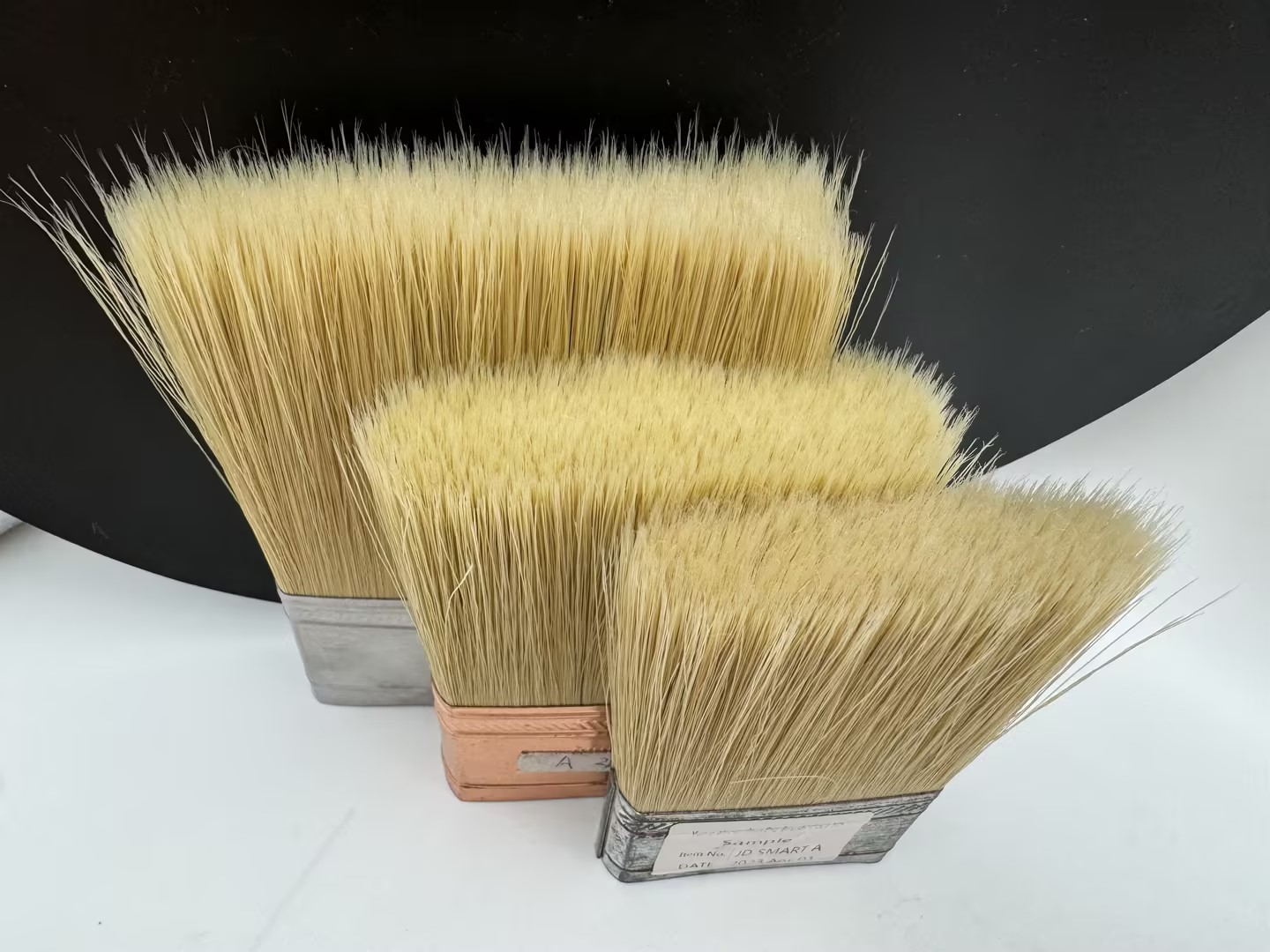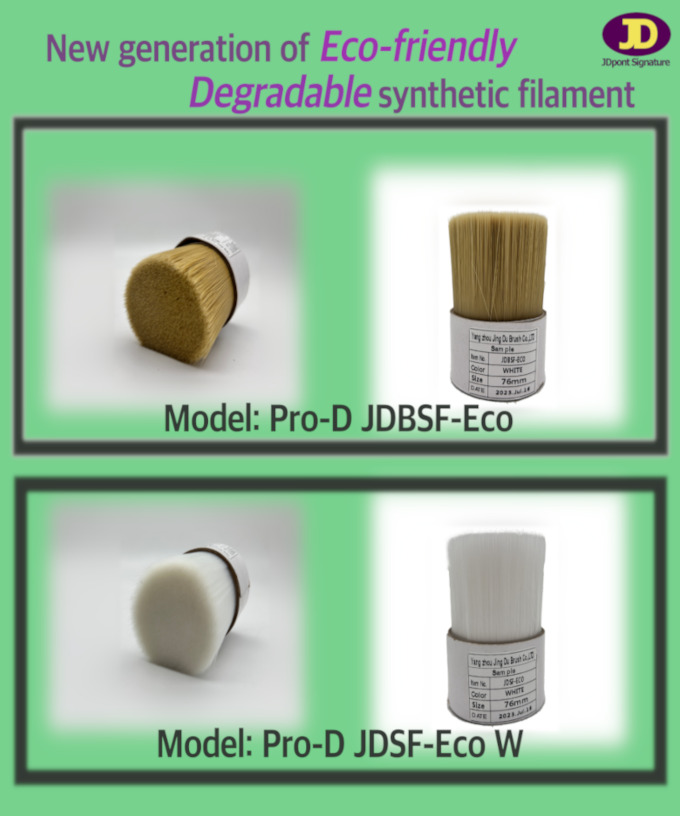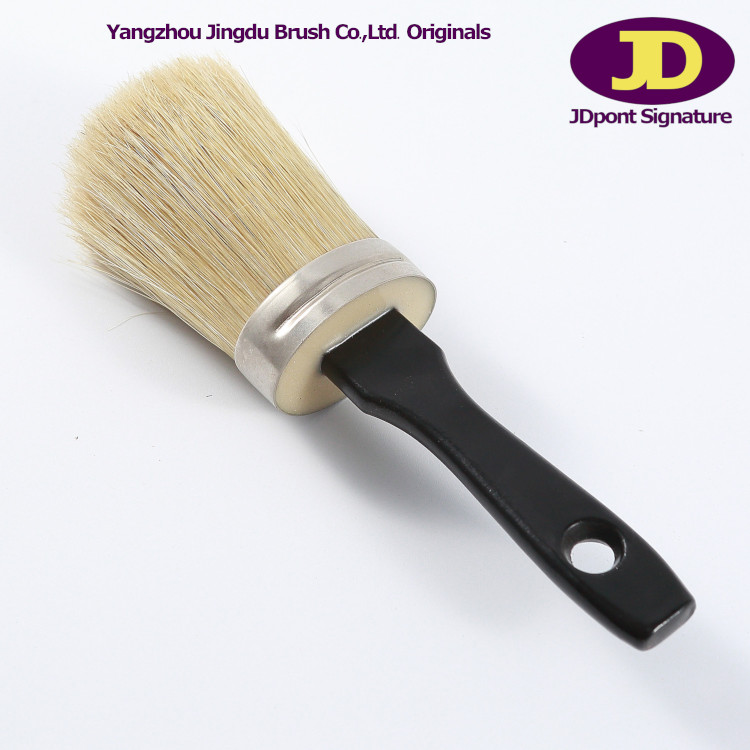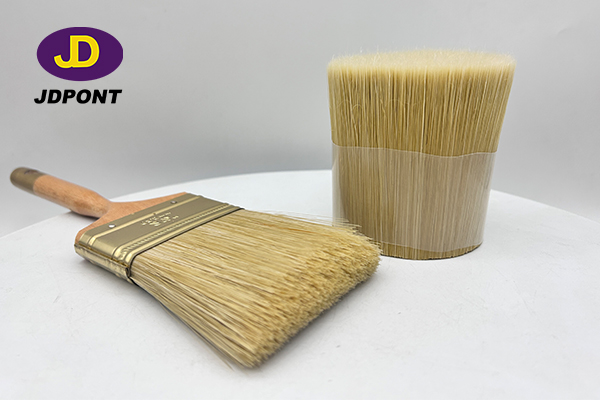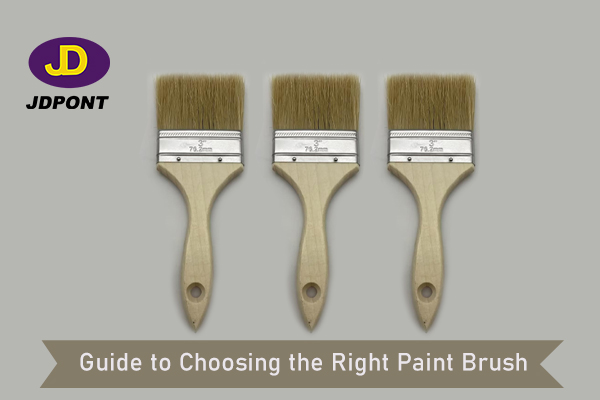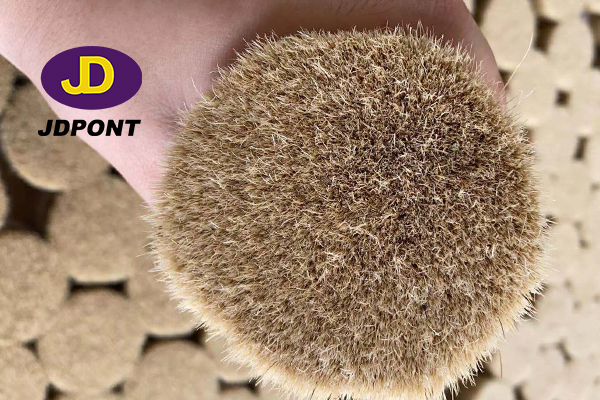How many kinds of brush bristle material?
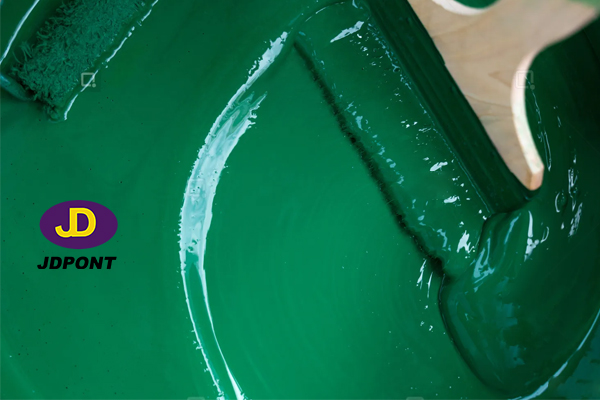
Brush bristles can be made from a variety of materials, and the best material for a given brush depends on its intended use. Here are some of the most common brush bristle materials:
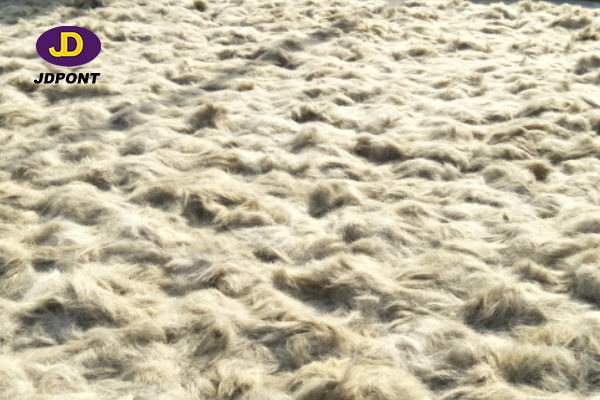
1. **Natural Hair**:
- **Hog Hair (Boar)**: These bristles are stiff and durable, commonly used in paintbrushes and hair brushes.
- **Sable**: This is a high-quality, soft hair obtained from the tail of a sable, a type of weasel. It's particularly prized for fine art brushes due to its ability to hold a fine point.
- **Pony Hair**: Softer than hog hair and often used in inexpensive watercolor brushes.
- **Camel Hair**: Contrary to the name, brushes labeled "camel hair" don’t actually come from camels. It's a generic term for brushes made from various soft hair, often squirrel or goat.
- **Badger**: Badger hair brushes are especially valued for shaving, as they hold water and soap lather well.
- **Ox**: These bristles are often used in lettering brushes and some types of flat brushes.
- **Squirrel**: Squirrel hair is soft and often used in quill brushes and some mop brushes.
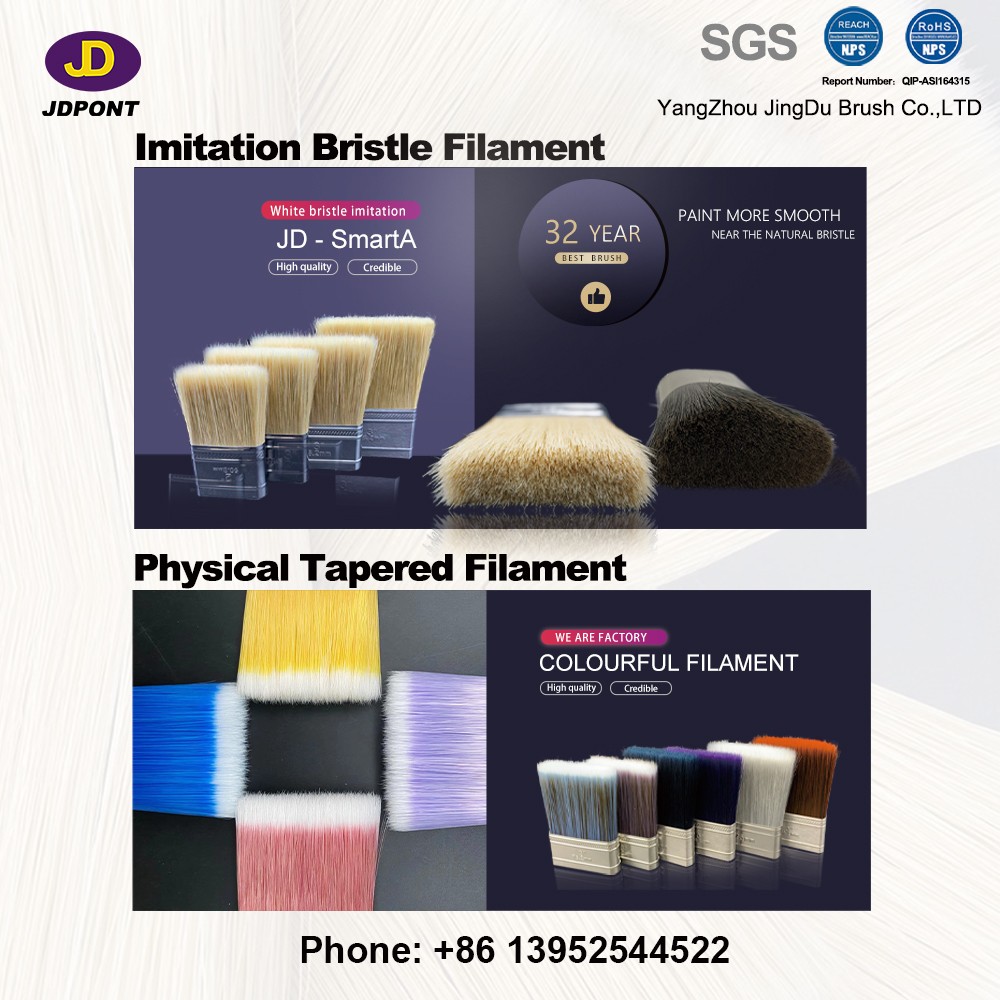
2. **Synthetic**:
- **Nylon**: Resilient, durable, and can mimic the feel of natural hair. Common in many types of brushes, from paintbrushes to cosmetic brushes.
- **Polyester**: Often used in conjunction with nylon in paintbrushes.
- **Taklon**: A type of synthetic fiber that is gold or white; it's a common choice for high-quality artist's brushes.
- **Toray**: Another synthetic fiber used in fine art brushes, similar to Taklon.
3. **Natural Plant Fiber**:
- **Tampico**: Derived from the agave plant, tampico fibers are used in scrubbing brushes.
- **Palmyra**: Obtained from the India palm tree and used in stiff brooms and brushes.
- **Bassine**: Derived from the palmyra palm and commonly used in brooms and scrub brushes.
4. **Other Natural Materials**:
- **Horsehair**: Often found in upholstery and shoe brushes.
- **Goat Hair**: Soft and often used in makeup brushes.
- **Feather**: Feather dusters are a common household cleaning tool.
5. **Metal Wire**:
- **Steel**: Used for brushes designed to clean metal, such as grill or wire brushes.
- **Brass**: Softer than steel and often used in brushes for cleaning more delicate metals or for igniting flintlocks.
6. **Other Materials**:
- **Silicone**: Sometimes used in brushes for cooking or baking due to its heat resistance.
- **Rubber**: Rubber brushes are often used for pet grooming to remove loose fur.
The choice of bristle material will often impact the brush's cost, durability, flexibility, and ability to hold and release mediums (like paint, ink, or makeup).
Certainly! Each type of brush bristle material has its own set of advantages and disadvantages based on its characteristics and the application it is intended for.
1. **Natural Hair**:
- **Advantages**:
- Offers a smooth, even release of medium.
- Can hold a fine point or edge.
- Highly absorbent and can hold more medium.
- **Disadvantages**:
- Typically more expensive than synthetic brushes.
- May wear out faster when used with acrylic paints due to their corrosiveness.
- Some people may have ethical concerns regarding animal-derived products.
2. **Synthetic**:
- **Advantages**:
- Typically more durable, especially with corrosive mediums.
- Less expensive than high-quality natural hair brushes.
- Vegan-friendly.
- Consistent in quality.
- **Disadvantages**:
- May not hold a point or edge as well as natural hair brushes.
- Less absorbent than natural hair.
3. **Natural Plant Fiber**:
- **Advantages**:
- Biodegradable.
- Stiff fibers are effective for scrubbing.
- **Disadvantages**:
- Not as resilient or long-lasting as synthetic or natural hair brushes.
- Can be coarse, limiting their applications.
4. **Other Natural Materials**:
- **Advantages**:
- Horsehair is resilient and has a natural springiness.
- Goat hair is exceptionally soft, making it suitable for applications requiring a delicate touch.
- **Disadvantages**:
- Limited durability compared to synthetic fibers.
- Ethical concerns about sourcing animal-derived materials.
5. **Metal Wire**:
- **Advantages**:
- Highly durable.
- Effective for cleaning grime or rust from metals.
- **Disadvantages**:
- Can scratch or damage surfaces.
- Not suitable for applications that require softness or flexibility.
6. **Other Materials**:
- **Advantages**:
- Silicone brushes are easy to clean, heat resistant, and don’t shed bristles.
- Rubber brushes are excellent for capturing pet hair without damaging fabrics.
- **Disadvantages**:
- Limited applications.
- Silicone brushes, in particular, may not offer the same fine precision as natural or synthetic brushes in artistic endeavors.
In choosing a brush, it's essential to consider the task at hand and the characteristics required of the brush. For example, a fine art watercolor painter might prioritize the point and water-holding capacity of a sable brush, while a professional house painter might look for the durability and even release of paint provided by a high-quality synthetic brush.


